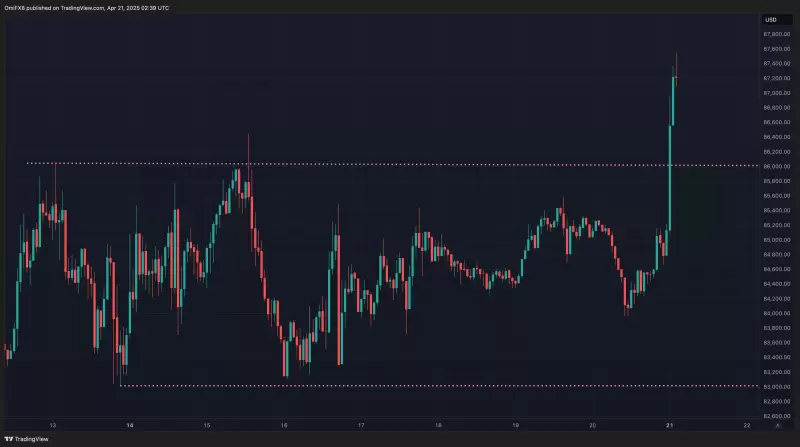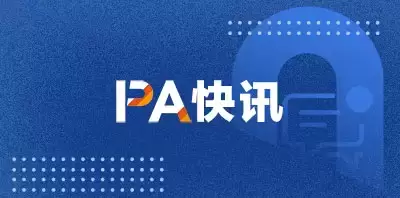 |
|
 |
|
 |
|
 |
|
 |
|
 |
|
 |
|
 |
|
 |
|
 |
|
 |
|
 |
|
 |
|
 |
|
 |
|
Cryptocurrency News Articles
HTX Research Analysis: Bittensor's dTAO Upgrade Redefines Decentralized AI Infrastructure
Mar 19, 2025 at 03:11 pm
SINGAPORE, March 19, 2025 /PRNewswire/ -- HTX Research, the research arm of HTX Group, has released an in-depth report titled, "dTAO

SINGAPORE, March 19, 2025 /PRNewswire/ -- In a new analysis by HTX Research, the research arm of HTX Group, titled "dTAO and the Evolution of Bittensor: Reshaping Decentralized AI with Market-Driven Incentives," the researchers delve into the recent developments within the Bittensor network. As the cryptocurrency landscape evolves, industry giants like DeepSeek and OpenAI continue to optimize existing foundational models, shifting the focus from creation to improvement.
This analysis identifies how Bittensor's Dynamic TAO (dTAO) upgrade addresses inherent challenges in decentralized AI, positioning the network as a pioneering force in this emerging sector. Bittensor's architecture revolves around three key components: the Subtensor blockchain, a Polkadot parachain with EVM compatibility; 64 specialized subnets; and a governance-focused Root Subnet. The network employs a dual-key security system, Coldkey-Hotkey, and a subnet UID framework for miners and validators to participate in a decentralized and open manner.
At the heart of its operational model lies Yuma Consensus (YC), a dynamic incentive mechanism that differs from traditional static reward systems. YC considers validators' weight vectors, derived from past performance and stake, to distribute TAO rewards every 12 seconds, forming a self-regulating "stake → weight → reward" loop. This design aligns contributions with incentives while mitigating malicious activities through the constantly changing state of the chain.
The dTAO upgrade, implemented on February 13, 2025, introduces liquidity pools for subnet tokens, fundamentally altering Bittensor's economic framework. Key innovations include:
This upgrade addresses prior limitations such as validator centralization, resource redundancy, and misaligned incentives. By linking subnet rewards to market performance, dTAO fosters competition, encouraging the development of specialized AI solutions, ranging from multimodal content detection to decentralized search engines.
The introduction of dTAO has led to the emergence of high-performing subnets, operating within a self-reinforcing feedback loop. As subnet tokens increase in price, they attract greater TAO emissions, subsequently drawing more users and validators. Examples include DeepMind, which focuses on decentralized search, and Kaito, a subnet specialized in generating and detecting deepfakes, both experiencing significant growth in their respective domains.
However, projects like Kaito highlight potential pitfalls, demonstrating that technical proficiency, like Kaito's in the realm of multimodal content detection, does not guarantee success without robust integration with core product utility.
Despite the advancements introduced by dTAO, HTX Research also identifies ongoing challenges. These include the lack of real-world demand drivers for TAO rewards, the potential for resource redundancy among overlapping subnets, and persistent validator centralization. To ensure sustained growth, HTX Research emphasizes the necessity for on-chain verifiability, standardized subnet performance benchmarking systems, and the integration of subnet token utility, such as governance or service access, to reduce speculative trading.
In conclusion, Bittensor's dTAO upgrade marks a transition from centralized governance to market-driven incentives. While challenges such as demand generation and token utility integration persist, the network's architecture and economic model provide a promising foundation for decentralized AI innovation. As subnet tokens evolve into tools with tangible utility, Bittensor is positioned to redefine collaborative and competitive dynamics within AI ecosystems.
About HTX Research:
HTX Research is the dedicated research arm of HTX Group, conducting in-depth analyses, producing comprehensive reports, and offering expert evaluations across cryptocurrency, blockchain technology, and emerging market trends. Providing data-driven insights and strategic foresight, HTX Research shapes industry perspectives and supports informed decision-making in the digital asset space. Through rigorous research methodologies and cutting-edge analytics, HTX Research remains at the forefront of innovation, driving thought leadership and fostering a deeper understanding of evolving market dynamics.
Visit us here.
Contact: glo-media@htx-inc.com
View original content to download multimedia:https://www.prnewswire.com/news-releases/htx-research-analysis-bittensors-dtao-upgrade-redefines-decentralized-ai-infrastructure-302405605.html
SOURCE HTX Ventures
Disclaimer:info@kdj.com
The information provided is not trading advice. kdj.com does not assume any responsibility for any investments made based on the information provided in this article. Cryptocurrencies are highly volatile and it is highly recommended that you invest with caution after thorough research!
If you believe that the content used on this website infringes your copyright, please contact us immediately (info@kdj.com) and we will delete it promptly.
-

-

-

- BTC Leads the Crypto Charts as Various Trends Show up Among Top Tokens
- Apr 21, 2025 at 12:55 pm
- The current price value of Bitcoin (BTC) sits at $84,483.95 with a 0.88% weekly rise. This digital currency leads the market using a market valuation of $1.67 trillion and 19.85 million BTC presently in circulation.
-
![Bitcoin [BTC] Short-term Holders Continue to Realize Losses as Their SOPR Drops Below 1 Bitcoin [BTC] Short-term Holders Continue to Realize Losses as Their SOPR Drops Below 1](/assets/pc/images/moren/280_160.png)
-

-

-

- The Solana network briefly surpassed Ethereum in total staked value, sparking debate over whether it is actually bullish or bearish.
- Apr 21, 2025 at 12:45 pm
- More than $53.9 billion worth of SOL is now staked on the Solana network from 505938 unique wallet holders, who are making an 8.31% annualized return
-

-
























































![Bitcoin [BTC] Short-term Holders Continue to Realize Losses as Their SOPR Drops Below 1 Bitcoin [BTC] Short-term Holders Continue to Realize Losses as Their SOPR Drops Below 1](/uploads/2025/04/21/cryptocurrencies-news/articles/bitcoin-btc-shortterm-holders-continue-realize-losses-sopr-drops/middle_800_480.webp)



